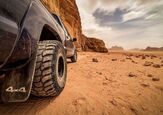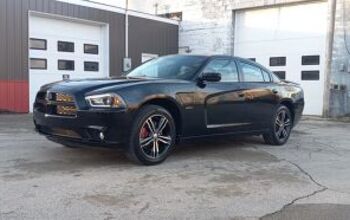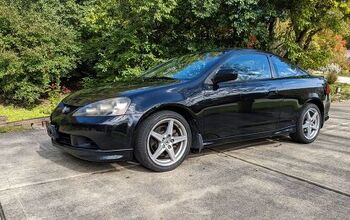How Much Abuse Can Old People Take? New Study Plans to Find Out

Since President Johnson signed the bills requiring all passenger vehicles to include safety belts in 1968, they have saved countless lives. However, with over 36 million of today’s American drivers over the age of sixty-five, current seatbelt designs might not pass muster for older bodies. It’s the same reason you don’t see a lot of old people involved in extreme sports or professional wrestling. An aged frame just can’t take the same sort of physical abuse as a malleable younger form.
So, with the elderly and frail in mind, the Ohio State University College of Medicine wants to design new seat belts to better protect older drivers.
“When seat belts were first designed, they used safety dummies that represented the average driver, which back then was a normal sized 40-year-old man,” said John Bolte, PhD, associate professor of health and rehabilitation sciences at Ohio State, in a statement. “The size and demographics of American drivers has certainly changed, but the basic seat belt designs haven’t, and we need to address that.”
Bolte and company are hoping to help in the development of future seat belt technology, claiming that the current incarnations actually contribute to injuries on the very people they are intended to protect. The Columbus-based team suggest that, even in minor accidents, poorly-fitting belts can cause everything from chest lacerations to broken ribs and a shattered pelvis.
“For a younger driver, these types of injuries are rarely life-threatening,” said Bolte, “But for someone who’s older, a couple of fractured ribs or flailed chest can lead to problems with breathing and even the chance for pneumonia. It can very quickly cause some serious issues.”
Although it isn’t as if the automotive safety industry has sat idle since 1968. The olden days of mandatory lap restraints eventually saw the inclusion of the three point harness and a the restraint pretensioner. A pretensioner effectively retracts a belt in the event of a crash, removing excess slack and restraining the body. However, those advancements did not prevent the shoulder belt from directing a large amounts force onto the chest of an occupant — the very problem John Bolte is hoping to address.
That issue has also, to an extent, been helped with load limiters. In their most basic form, limiters exist as folds stitched into the belt webbing that gives way under heavy load. More complicated load limiters exist as a torsion bar in the retractor. The European New Car Assessment Program ran a test on load limiters paired with a pretensioner in 2003, concluding that the pairing drastically reduced head injuries while minimizing chest acceleration and g-force loads.
More recently, Ford has begun implementing inflatable belts intended to secure passengers while allowing the belt’s force to be distributed more evenly across the chest.
However, most of these safety features take a fairly one-size-fits-all approach and are not infallible. In 2003 General Motors recalled 312,715 vehicles due to their load limiters. The energy-absorbing loop stitched into the belt could introduce an additional 10 inches of webbing in a severe crash and potentially eject the occupant from the vehicle.
It sounds as if Ohio State’s research is keying into who is behind the wheel as much as how they are being restrained in an accident. Preliminary research is focused on just how much abuse an older person’s body can take, and how well modern restraint technology copes with that fragility. Thankfully, they will be relying upon specially modified dummies for testing and not geriatric volunteers.
“Once we understand the position of the driver or passenger in the crash, we will be able to better understand where injuries are most likely occur,” said Bolte. “That information can be used to improve seat belts, airbags, even the entire safety system, especially for older, more vulnerable drivers.”

A staunch consumer advocate tracking industry trends and regulation. Before joining TTAC, Matt spent a decade working for marketing and research firms based in NYC. Clients included several of the world’s largest automakers, global tire brands, and aftermarket part suppliers. Dissatisfied with the corporate world and resentful of having to wear suits everyday, he pivoted to writing about cars. Since then, that man has become an ardent supporter of the right-to-repair movement, been interviewed on the auto industry by national radio broadcasts, driven more rental cars than anyone ever should, participated in amateur rallying events, and received the requisite minimum training as sanctioned by the SCCA. Handy with a wrench, Matt grew up surrounded by Detroit auto workers and managed to get a pizza delivery job before he was legally eligible. He later found himself driving box trucks through Manhattan, guaranteeing future sympathy for actual truckers. He continues to conduct research pertaining to the automotive sector as an independent contractor and has since moved back to his native Michigan, closer to where the cars are born. A contrarian, Matt claims to prefer understeer — stating that front and all-wheel drive vehicles cater best to his driving style.
More by Matt Posky
Latest Car Reviews
Read moreLatest Product Reviews
Read moreRecent Comments
- Calrson Fan Jeff - Agree with what you said. I think currently an EV pick-up could work in a commercial/fleet application. As someone on this site stated, w/current tech. battery vehicles just do not scale well. EBFlex - No one wanted to hate the Cyber Truck more than me but I can't ignore all the new technology and innovative thinking that went into it. There is a lot I like about it. GM, Ford & Ram should incorporate some it's design cues into their ICE trucks.
- Michael S6 Very confusing if the move is permanent or temporary.
- Jrhurren Worked in Detroit 18 years, live 20 minutes away. Ren Cen is a gem, but a very terrible design inside. I’m surprised GM stuck it out as long as they did there.
- Carson D I thought that this was going to be a comparison of BFGoodrich's different truck tires.
- Tassos Jong-iL North Korea is saving pokemon cards and amibos to buy GM in 10 years, we hope.


































Comments
Join the conversation
65 is a bit young, 70 seems more reasonable to me.
GM bring back Olds and build it appropriately.